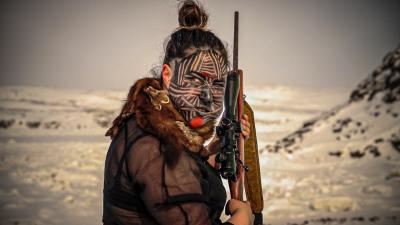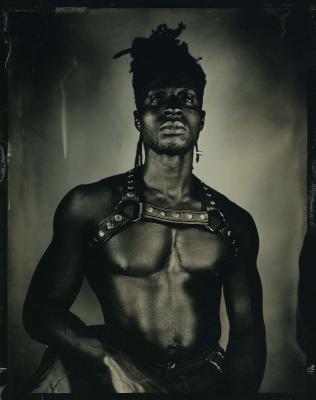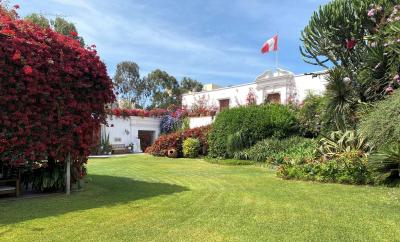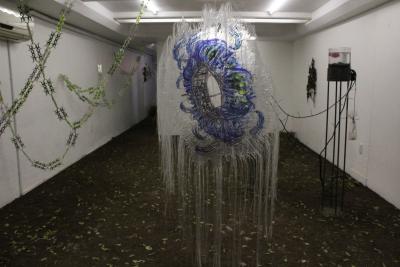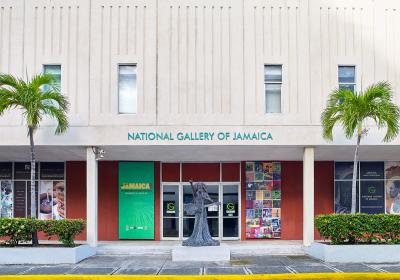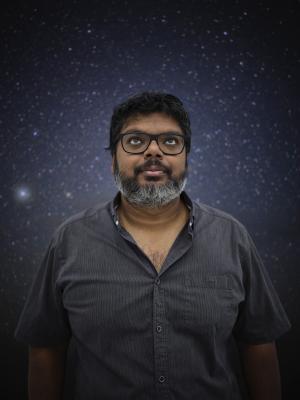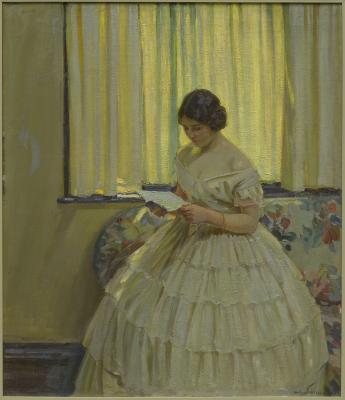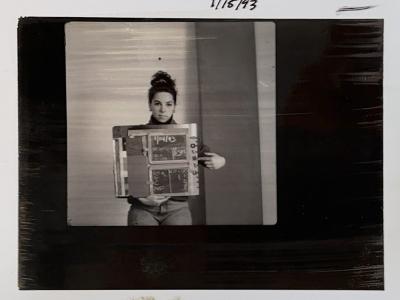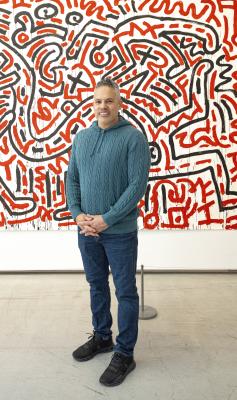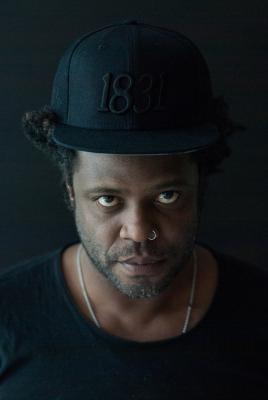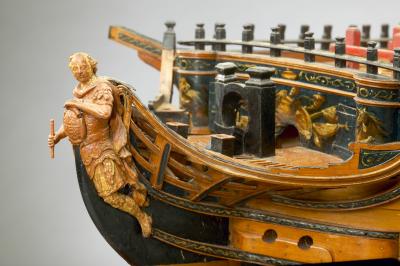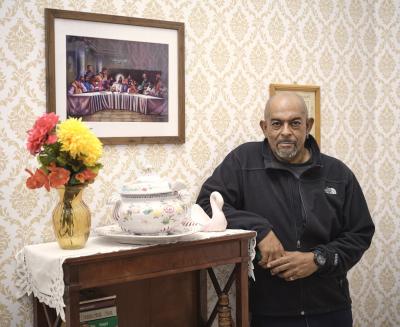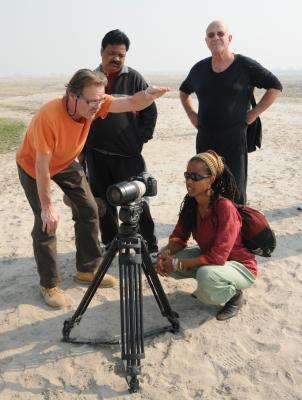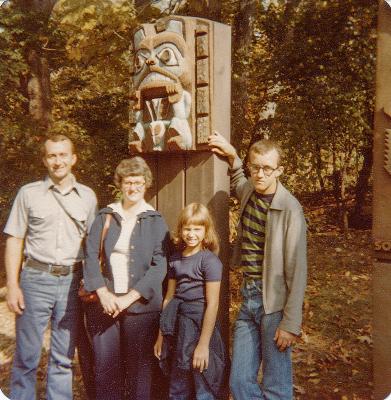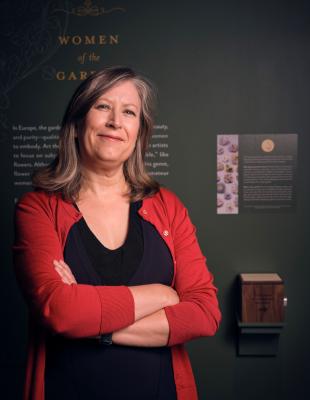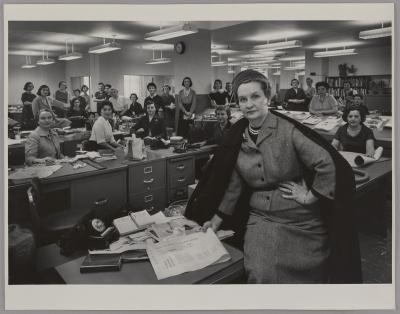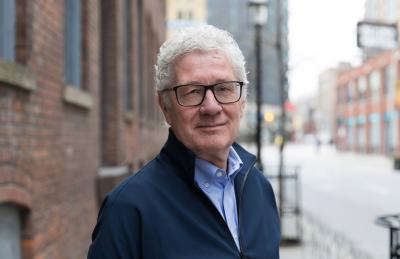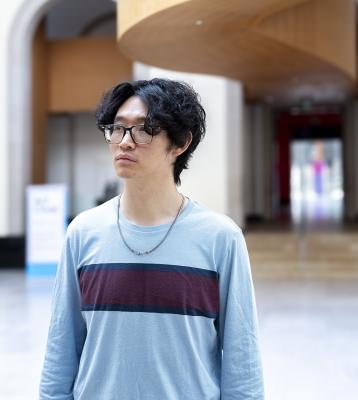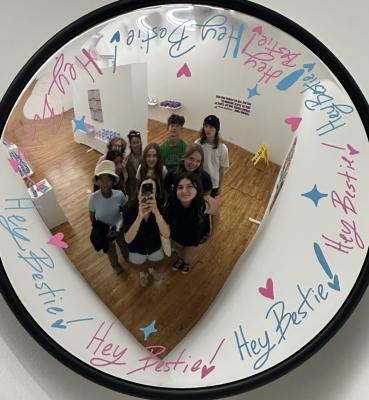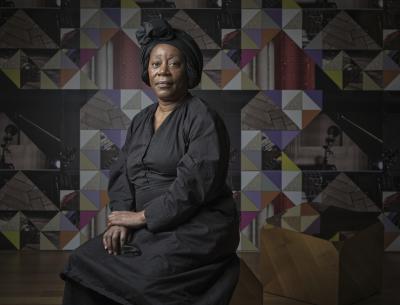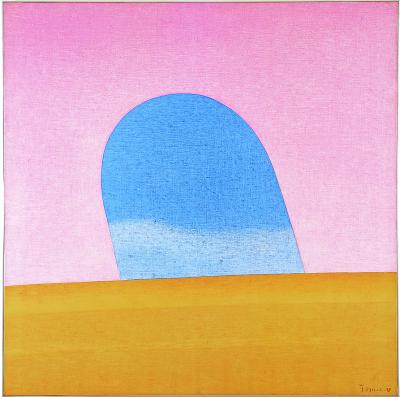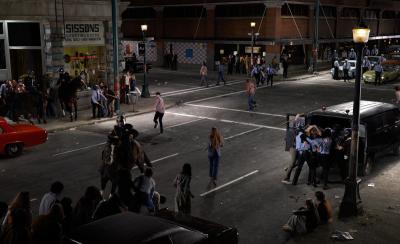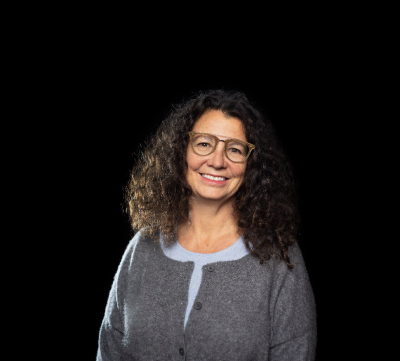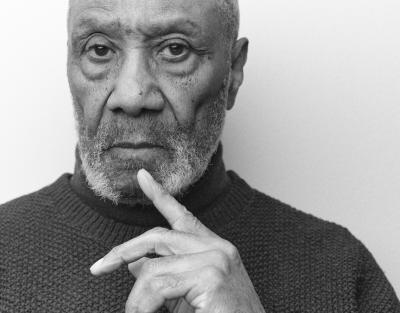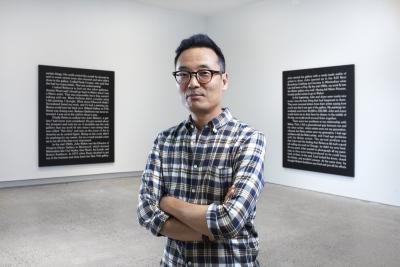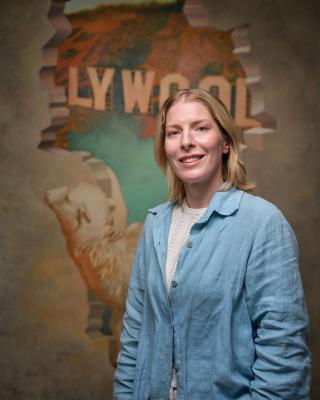Astronomy lessons through Wolfgang Tillmans
A conversation with U of T Professor Suresh Sivanandam about the mechanics of stars and planets
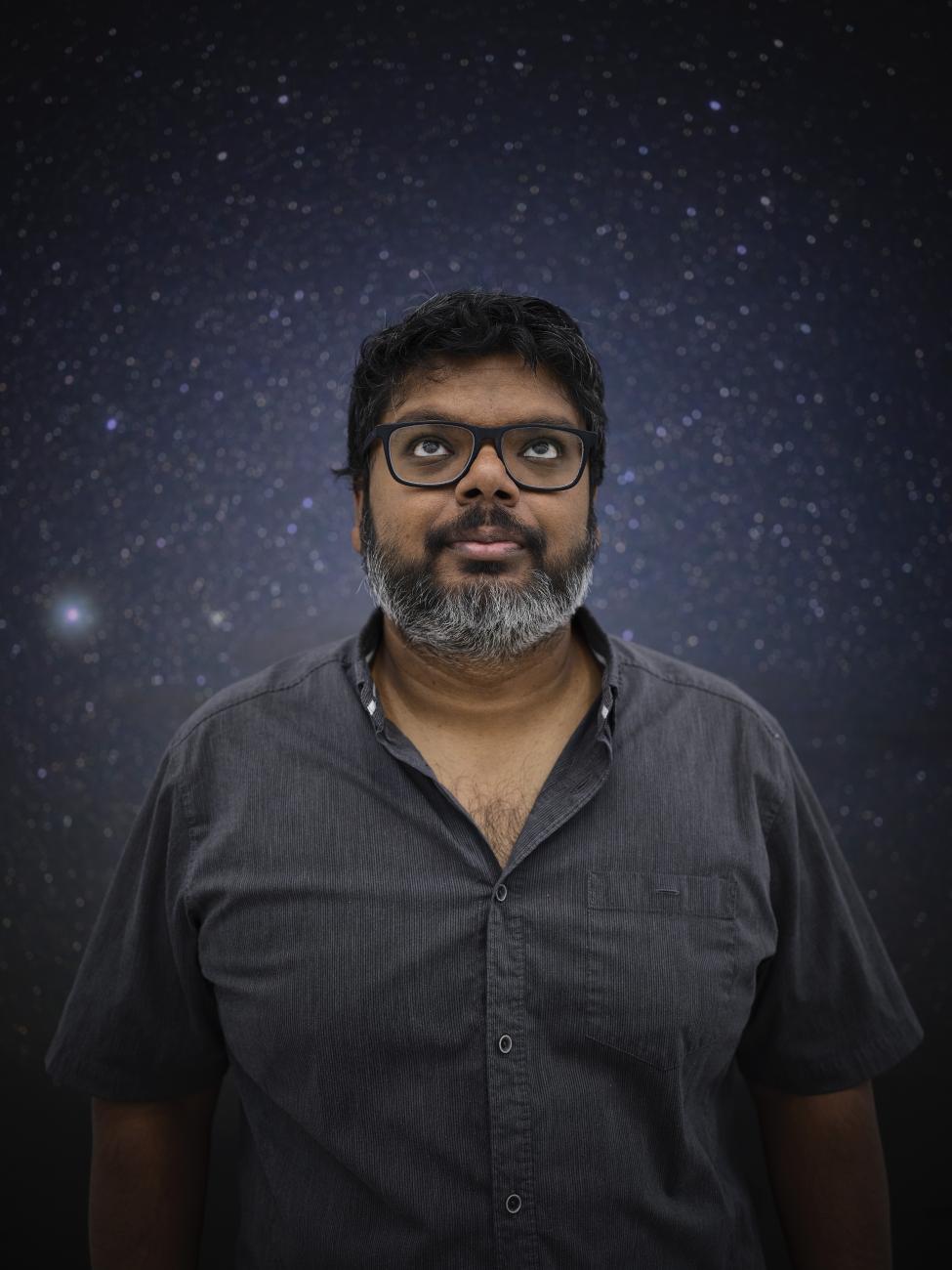
Professor Suresh Sivanandam with Wolfgang Tillmans’s Munuwata sky, 2011 © Wolfgang Tillmans. Photo: Craig Boyko © AGO
An artist who has explored almost every genre of photography imaginable, Wolfgang Tillmans’s childhood passion for astronomy prompted his earliest explorations with image making, first with the telescope, then the photocopier, the video camera and ultimately the camera.
“Astronomy,” recounted the artist in an interview in 2001, “in a sense initiated me into the visual world. When I was ten or eleven, in 1978 or 1979, I fell in love with the stars and soon got a telescope and did nothing but look at the stars, and the sun during the day, observing and drawing the sunspots...”
Walking through To look without fear, Tillmans’s major retrospective – on view now at the AGO – it’s clear that his fascination with astronomy remains unabated, four decades on. The sun, the moon over Puerto Rico, the moon in earthlight, planets, expanses of starry sky, the horizon line, portraits of them all, in various phases and taken with various means, punctuate Tillmans’s expansive exhibition.
Writing in the British newspaper The Guardian in 2004, Tillmans described how “observing the 2004 transit [of Venus] through my telescope, which I still have from my astronomy-obsessed teenage days, had no scientific value, but it was moving to see the mechanics of the sky. To see a planet actually move in front of another gave me a visual sense of my location in space.”
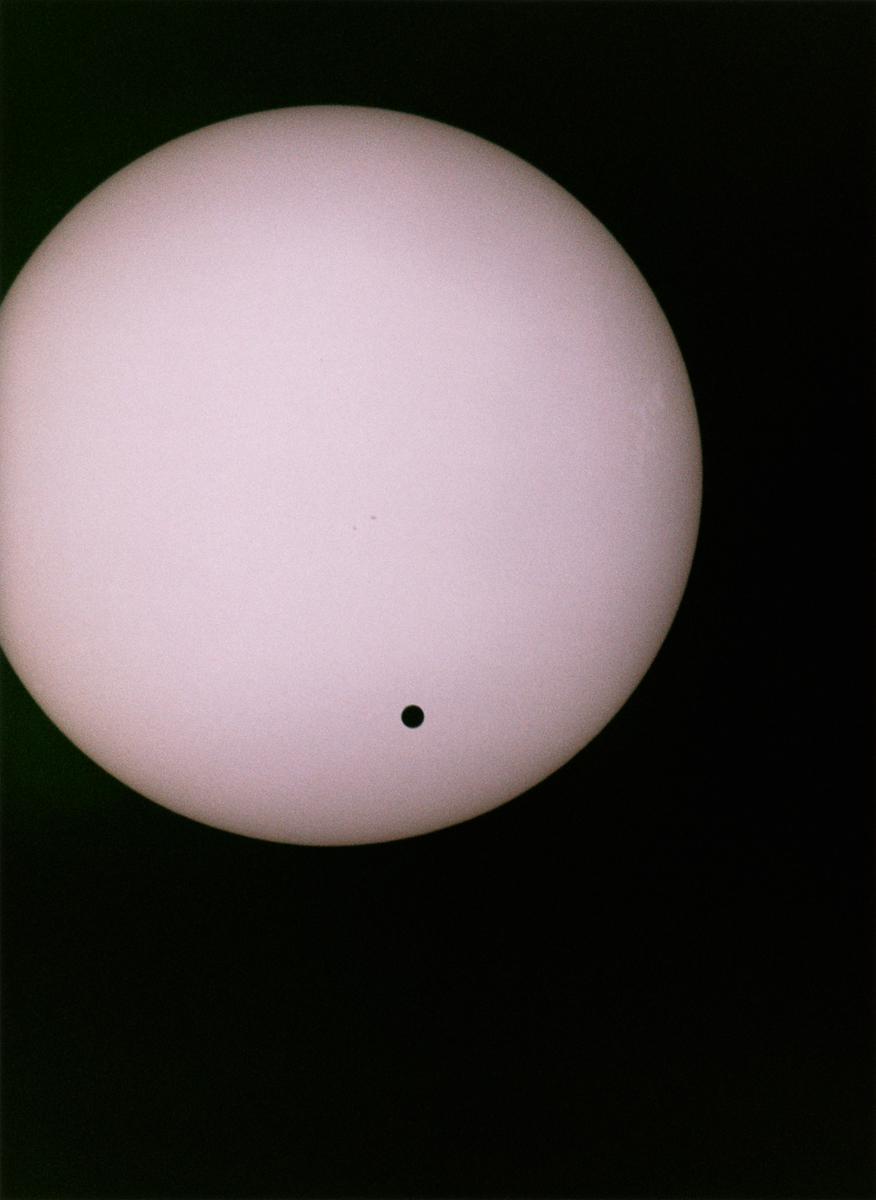
Wolfgang Tillmans, Venus transit, 2004. Courtesy of the artist, David Zwirner, New York/Hong Kong, Galerie Buchholz, Berlin/Cologne, and Maureen Paley, London
To better understand these ‘mechanics of the sky,’ we invited Professor Suresh Sivanandam, Interim Director of the Dunlap Institute for Astronomy and Astrophysics at the University of Toronto, to explore the exhibition with us. A specialist in the formation and evolution of galaxies and adaptive optics, Prof. Sivanandam, was impressed, to say the least.
Here are excerpts from that conversation.
Foyer: How is our ability to take photographs of space changing?
Sivanandam:
The transition from film has made a big difference. As late as the 1970s, satellites used film cameras, and film canisters would be parachuted back to Earth to be picked up in mid-air by aircraft and then developed. Telescopes on the ground also used film to capture the night sky. Digital cameras are just so much more sensitive. They have revolutionized Earth and space observations, which have trickled down into commercial cameras. It’s incredible what you can see with just your cellphone camera now if you can get somewhere dark enough.
Optical research telescopes are constantly evolving, but it takes decades to design and build them. Right now, there are at least three major construction projects happening around the world to create telescopes the size of this floor, around 30 meters (100 feet) wide. Plus, there are also projects focusing on radio waves and the infrared spectrum. While astronomy pushes forward with bigger and better telescopes needed to do cutting-edge research, it is sad when observatories like the largest telescope on Canadian soil, the David Dunlap Observatory in Richmond Hill, are closed for research, which happened more than a decade ago. This is in large part due to its relatively small size compared to modern observatories, the increasing light pollution, and fewer clear nights in Southern Ontario. We’re not well situated. You want no ambient light, no clouds, and to be really high – the high mountains in Chile are good. So are the tall peaks of volcanos in Hawaii.
The telescopes that we send to outer space also have extremely light-sensitive cameras. But unlike most digital cameras, they are purpose-built scientific instruments – designed to gather data, which is then translated into images. They are also huge – the Hubble Space Telescope, which launched in 1990, is the size of a small school bus, and the James Webb Space Telescope is even bigger, the size of a tennis court. Hubble can take incredibly high-quality pictures of very, very small regions of the sky. Launched in 2021, the James Webb, by contrast, takes images in the infrared – it detects light on a spectrum that the human eye cannot even register. Those data are then sent back to Earth, and a team of scientists decode, process, and interpret them, applying false colour to the different wavelengths of light, in order to get the beautiful images you have seen everywhere. These false colour images are an interpretation of what is being seen by the telescope.
Foyer: We’re standing in front of Tillmans’s photograph Venus Transit (2004). Can you describe what is happening?
Sivanandam: It occurs when we're looking at the sun, just as the planet Venus moves in front of it.
Foyer: Is it a regular phenomenon? Have you seen it?
Sivanandam: It actually happens every 100 years or so – last occurring in 2012. Our institute organized a public viewing party here in Toronto at the Varsity Stadium. The transit has this interesting cycle where when it does happen, it happens in rapid succession, only eight years apart. So you'll have the first one, and then the second one eight years later, and then you have to wait about 100 years for the next one. This explains why Tillmans captured one in 2004, which is shown in spectacular fashion at this exhibition. The next one will be 2117.
Despite Venus being located between the Earth and the Sun, the transit doesn’t happen more regularly because its orbit is slightly inclined to Earth’s orbit around the Sun, tilted by a few degrees. It also moves around the Sun at a different rate than Earth does. In fact, it orbits the Sun faster than the Earth in just 225 days. So, there are only certain moments in time where all three – the Sun, Venus, and Earth – line up. And when it happens the transit only lasts a few hours. You have to prepare for it and hope for good weather. I am glad I caught the one in 2012; it will be the last one I will see in my lifetime.
Foyer: What accounts for Venus looking so very small in these images?
Sivanandam: Relative distance. Venus is not small – it’s about the same size as Earth but is just really far away. What we forget, standing in our backyards, is just how massive the Sun is. It is one hundred times wider than the Earth. Here, we are just seeing Venus’s shadow as a tiny black disk on Sun.
Venus has similarities to Earth. It’s about the same size, and it has a rocky surface but it also has a very thick atmosphere, much thicker than ours, made of mostly carbon dioxide. It is 500 Celsius on the surface! This is due its closer proximity to the sun and the greenhouse effect from the carbon dioxide atmosphere. Any probes that land on the surface are destroyed within minutes to hours due to the intense heat!
Foyer Why don’t we see sun flares or wisps coming off the sun in this image?
Sivanandam: The Sun is almost perfectly round. It's a massive gaseous ball with a nuclear fusion reactor at its centre. The pressure created by the fusion reaction is trying to blow the sun apart, but its strong gravity that is pulling all of its material towards its centre compensates. In the end, you end up with a giant sphere. To see any of the wisps (solar prominences) coming from it, you’d need a special filter – the human eye can’t easily see them because they are very faint in relation the bright Sun itself. Such a filter is designed to capture emissions from hydrogen gas. There are also other more complex devices called coronagraphs that can blot out the bright light from the Sun to reveal its prominences. However, you should be able to see sunspots if you look at the Sun with a solar filter, which cuts down the brightness of the sun many thousand times to make it safe to view it directly.
Foyer If Tillmans hadn't used a pink Mylar filter here, what colour would the sun be?
Sivanandam: It’s a greenish yellow.
Foyer How long have astronomers been documenting Venus transiting?
Sivanandam: The first transit was observed and recorded a couple of centuries ago, in 1639. You can also see Venus in reflected light and not in transit with the naked eye. It appears as an extremely bright star after sunset towards the west or before sunrise towards the east, depending on where it is in its orbit in relation to the Earth. It was the German astronomer, Johannes Kepler, who originally postulated that Venus should transit, although his calculations of when it should happen were slightly off, and he never saw it himself.
Foyer A focus of your research is mapping galaxies. How do we know what the shape of our galaxy, the Milky Way, is?
Sivanandam: Trying to figure out the shape of the Milky Way is actually really complicated because we live in it and can't yet step out of it to see how it looks from the outside. So, we have to infer its shape based on all the different measurements we can do. From photographs, we know what other galaxies look like – there are some that look like blobs, some that look like spirals, and there are galaxies that look like big spheres, balls of stars. All evidence we have collected of the Milky Way suggests that it is a spiral. It turns out that it’s really hard to form spiral galaxies because they can get easily disturbed and their spiral structure disrupted by other galaxies falling into them. There’s a lot of research work that goes into understanding how these formations of stars come to be and how they stay stable for long periods of time. It involves looking within our galaxy and outside of our galaxy to the farthest reaches of the universe to piece together the puzzle of how everything came to be. This is what the James Webb Space Telescope is doing right now by finding the youngest galaxies shortly after the universe began. It’s a testament of technological improvements in capturing light driving forward our ability to understand our nature and place in the cosmos.
Wolfgang Tillmans: To look without fear is on view on Level 5 of the AGO until October 1. To look without fear was developed by Roxana Marcoci, The David Dechman Senior Curator, Department of Photography, The Museum of Modern Art, with Caitlin Ryan, Curatorial Assistant, and Phil Taylor, former Curatorial Assistant, Department of Photography, The Museum of Modern Art. The AGO presentation is organized by Sophie Hackett, Curator, Photography, Art Gallery of Ontario, with Marina Dumont-Gauthier, Curatorial Fellow, Photography, Art Gallery of Ontario.
Throughout the run of the exhibition, a number of Tillmans’s video works – including Moon in Earthlight – will be screened in Jackman Hall (free with AGO admission). Check the exhibition page for a screening schedule.
